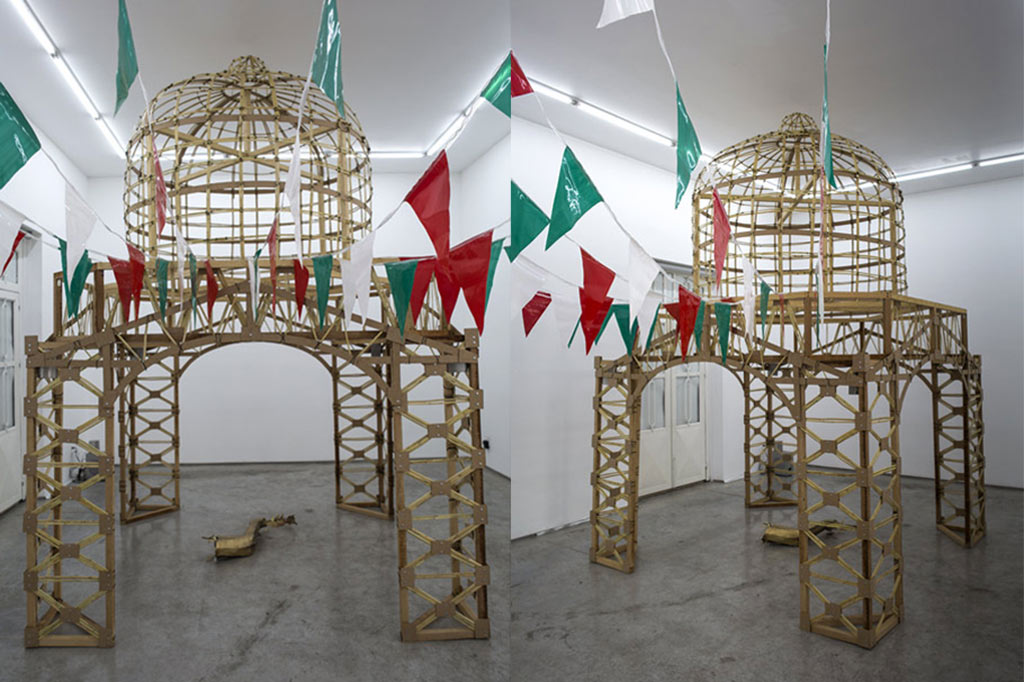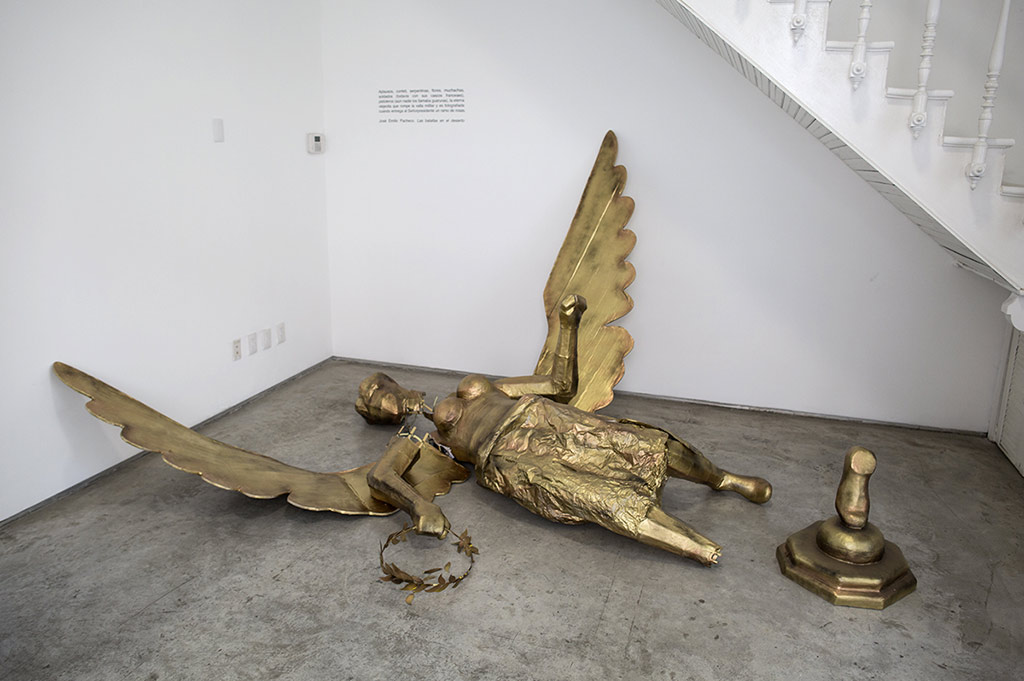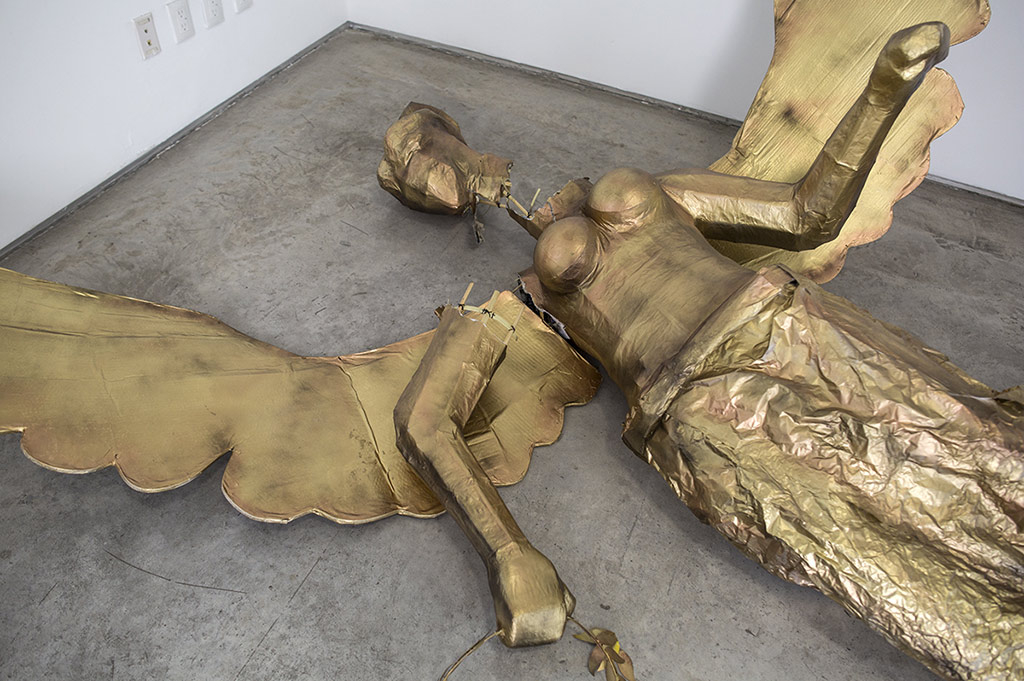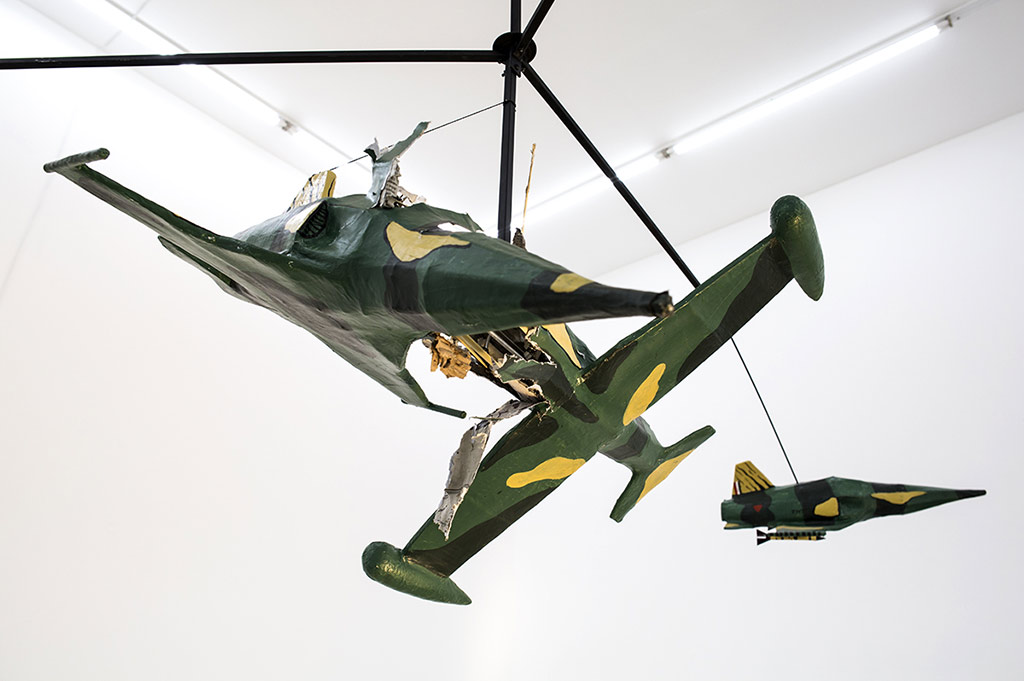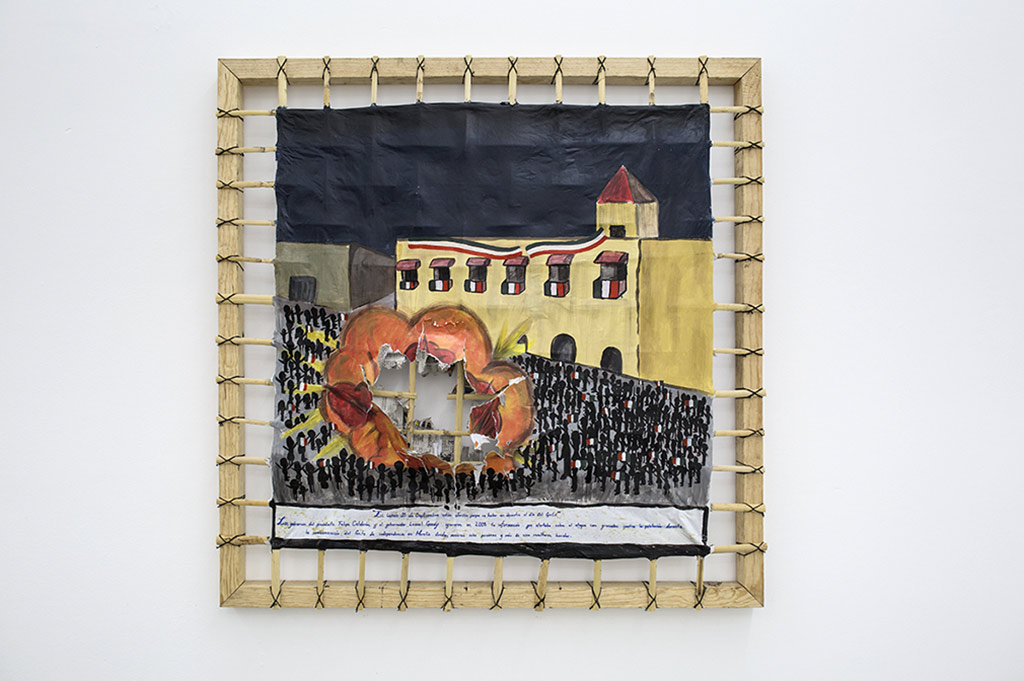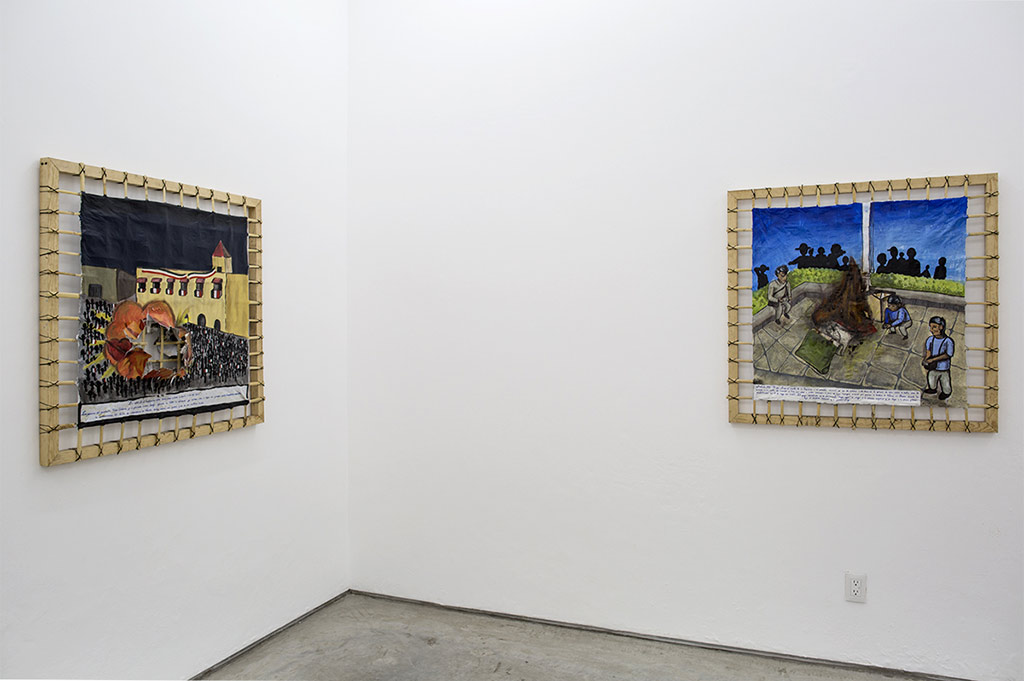“Applause, confetti, papef streamers, flowers, girls, soldiers (still wearing their French helmets), gunmen (no one called them guaruras), the eternal old lady who breaks the military fence and is photographed when she hands the president a bouquet of roses”.
José Emilio Pacheco. Battles in the Desert
Symbols, despite their most traditional descriptions, appear to need a solid state of existence. Some symbols have been forged (almost literally) on iron, concrete, fabric, paper and countless materials. But this is not a random process; there are previous politics involved that stamp on them their own narrative with its respective imaginary of the world. In this body of work, symbols are freed from their material hardness, the one that keeps them standing, and reveals their reifying and ideological construction, submitting them to a process of deconstruction. Political architectures of Mexico are rethought, reconstructed and destroyed to expose the internal layers that generate the myth of patriotic pride rooted in official history and its symbols. Beyond the ludic, in this precarious territory it is urgent to preserve social memory and revive a critical collectivity to demystify the paternalistic figure and its commemorative coercion, in crave of new and legitimate celebrations.
